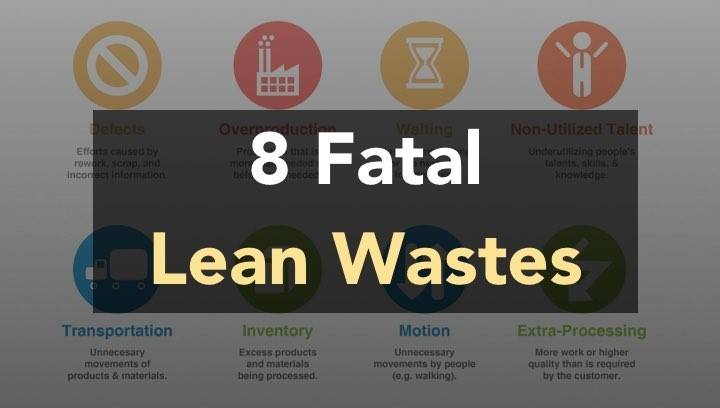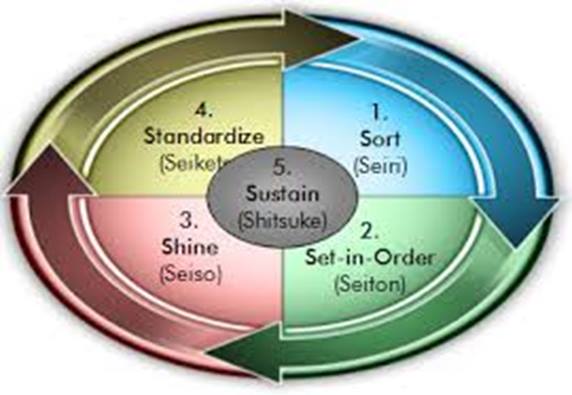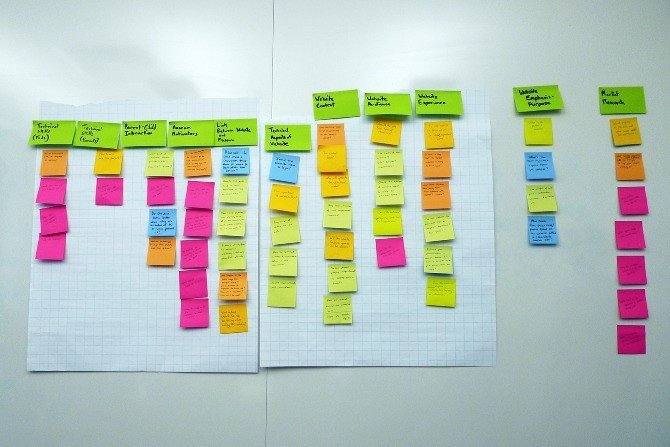Top 51 things you should know about Green Belt Certification
Welcome back, Friend! I believe your Six Sigma journey is progressing in the right direction. Hope you read my article on “15 things every Six Sigma aspirant should know”. Many thanks for your feedback!
So, let’s refresh our memory on what “Green Belt” is:
Within the various Six Sigma roles in an organization, Green Belt role is the most popular and widely followed. Part of the reason is that anybody could be a Green Belt, whether they are from Operations, Production, Marketing or any other function.
Green Belts are 6 sigma project leaders capable of forming and facilitating Six Sigma Teams. They manage Six Sigma projects from concept to completion. It is typically a part-time role.
The 51 things you should know about Green Belt Certification Training
Well, 51 might seem like a lot to know. I will request you to not get bogged down by that number. This article talks about the basics as well as elaborates the specifics of Greenbelt.
- The first and foremost thing you need to know is
Being a Lean Six Sigma Green Belt (LSSGB) is not rocket science, does not require expertise in statistical techniques and most importantly, you can apply the techniques learned in your current role, whether at work or at home.
- LSSGB is a much sought after certification program. Indeed.com states that the national average salary for a Green Belt in 2016 is $83000 per year in the United States.
- There is no eligibility criterion to enroll for an LSSGB course, especially the one with GreyCampus training. Anyone who wants to gain knowledge in Lean Six Sigma may enroll.
- The LSSGB training covers techniques in operational excellence. It is advisable though not mandatory, to spend some time within a business environment or industry before enrolment. This will help the student understand the applicability of the techniques better.
- The LSSGB course is very popular amongst people working within the Quality Management domain. Anyone with a non-quality background or role will also find this useful. According to data updated in January 2017 by payscale.com the median annual salaries for employees Green Belt Six Sigma Certified Professionals in the United States were (not all of them are full-time quality roles):
Job
Salary ($)
Mechanical Engineer
75,873
Manufacturing Engineer
70,154
Operations Manager
80,753
Process Engineer
72,250
Industrial Engineer
65,187
Production Supervisor
62,446
Quality Manager
80,232
- Hands-on application of Six Sigma techniques is very helpful for people who are in non-Six Sigma roles.
- If you wish to make a career as a Six Sigma professional, LSSGB is the right start-point. From thereon, you could go onto Black Belt and Master Black Belt roles through constant learning and demonstrated achievements.
- Green Belt Six Sigma professionals are integral to roles within manufacturing as well as service organizations.
- Research by Invensis Global Learning Services shows that Lean Six Sigma is the most recognized process improvement methodology across the globe. Enterprises achieved 65% of higher project savings by adhering to Six Sigma methodology.
- Organizations invest fortunes in market research and innovation. Structured lean six sigma methodologies are a guiding force in this space.
- In today’s world, change is imminent. Lean Six sigma embraces change. As a philosophy, it propagates continuous improvement in both quality and timeliness.
- Six Sigma is not only about Statistics. Six Sigma applies statistical tools to analyze problems and measure outcomes. Keen interest in quality customer delivery, challenging status quo continues and basic knowledge of statistics is all that is required to be a Six Sigma professional.
- LSSGB training is available in-house within some organizations and also conducted by reputed Training Institutes like GreyCampus and others.
- The courses are available in both online and offline (classroom-instructor led) mediums. The course duration is 2-3 days usually with an assessment on the last day.
- LSSGB training covers aspects related to defining the problem and building a business case for the same. It talks about cost-benefit analysis methodology and equips you with tools for project selection.
- The training teaches you in-depth application of structured problem-solving techniques like DMAIC, the acronym for Define-Measure-Analyse-Improve-Control
- You know “95% of errors occur due to bad processes”? In LSSGB training, the focus is on fixing processes to reduce errors.
- Lean and Six Sigma are both applied to improve business processes and performance. Lean focuses on the processes, improving flow and making them more efficient. Six Sigma focuses on output, improving quality, and increasing effectiveness.
- LSSGB captures learnings and approaches adopted by customer-driven organizations that strive to deliver excellent quality products and services. The focus is on the customer.
- Six Sigma training equips you with tools and an approach to identifying what the customer is looking for and more importantly, measuring the same. This removes ambiguity from the “What Good Looks like” conversations.
- Cost of Poor quality in certain service organizations may be as high as 50% of the budgets. LSSGB equips you with tried and tested techniques to reduce the cost of poor quality and increase profits for your organization.
- LSSGB training teaches you about the reduction of wastes and enhancing value to customers. It introduces simple concepts like 8 wastes management.

- The course teaches you about simple and effective work and resource organization techniques like 5S-

- It talks about the basics of Six Sigma-like problem-solving strategy, Voice of Customer, Employee, and Business. It introduces you to Six Sigma roles and responsibilities.
- With live industry examples, the training introduces you to Fundamental concepts like Critical to Quality measures, metrics, Defects, and Opportunities.
- The training also captures simple tools like Fishbone, Pareto 80/20 rule, SIPOC and process mapping, which help you identify the root cause of a problem.
- It teaches you application of basic statistical concepts like measures of central tendency and variation to measure performance.
- It helps you understand structured methodologies to arrive at improvements, using tools like Affinity Diagram, PICK charts, and other simple techniques.

- The best Lean Six Sigma initiatives can fail if improved processes are not sustained and monitored over a period of time. The training methodology covers aspects like control charts, dashboards and governance structure so you ensure that the improvements are sustained over a period of time.
- LSSGB training covers control methods and also talks about simple techniques which assist in mistake-proofing processes, thereby making the controls effective and reducing manual checks.
- Assessments are conducted through online, typically testing the student’s understanding of the concepts. Duration is 3-4 hours with multiple choice answers.
- Most training institutes award certification accredited by IASSC or ASQ. Exams are hosted by the accrediting organizations as well.
- Certification from accredited organizations lends credibility to the training outcomes and is therefore recommended.
- The tools and materials shared with you during training are accessible for a lifetime. Most training websites are updated with latest news and updates within the Lean Six Sigma world, so you are always updated on them.
- Applying the techniques learned within your work environment ensures embedding of the concepts learned in the course. If you do not apply, you will forget!
- Sharing the simple tools and techniques with your teams in your work environment is an effective method of embedding learnings and sharing best practices.
- Starting with work or resource organization using 5S techniques is a proven and effective way to get your teams bought onto the positive impact of operations excellence approach.
- Research shows that both manufacturing and service organizations incur the cost of poor quality. In some instances, it may be as high as 50% of the budgets for service organizations. This is where Six Sigma as an approach and LSSGB qualified professionals applying the same brings a difference.
- Six Sigma also opens up a plethora of opportunities for people to constantly learn new techniques. Having applied the same within your teams, you can also get an opportunity to train others on the techniques and application. This results in on-going personal development as well.
- For quality personnel in manufacturing or service organization, Lean Six Sigma certification helps build skills and learn new techniques. It also gives them a knowledge base to train their teams on the skills as well.
- For operations/service/production manager in an organization, Lean Six Sigma certification helps enhance their understanding of measures and techniques. They can train their team members on effective problem-solving techniques further.
- Whether you work for a start-up or an established organization? Whether your organization talks about Robotics or AI? Organizations look out for Six Sigma professionals to drive structured and sustainable improvements.
- As a career interest if you wish to pursue your own business. Lean Six Sigma professionals are sought after by organizations as consultants and trainers. A certification might just be the beginning of your career as a business person.
- Lean and Six Sigma techniques are applicable to work as well as home or community. It is equally effective at organizing your office layouts as it is for organizing your home wardrobe. It can not only help reduce costs through waste reduction at work but also save you money on your electricity bills at home.
- “Be the change you want to see in the world”. LSSGB helps you look at problems as opportunities for improvement and as you walk the talk, you inspire your team to follow.
- GB certification adds a significant boost to your resume and increases credibility within your professional network.
- All companies, big or small, start-ups or established ones are in search of people with knowledge of problem-solving techniques and design principles.
- A trained LSSGB is an effective Project Manager as well. Further, you can use your PDUs (credits) from your LSSGB training to enroll for courses from PMI and other institutes as well.
- You are a part of select alumni of Six Sigma professionals, thereby resulting in continuous learning and development by sharing best practices across industries and geographies.
- The demand for Lean Six Sigma professionals will continue to increase as organizations need to innovate and thrive in today’s fast-paced business environment.
If you have read this far, I can see that-
- YOU have a strong will to pursue Six Sigma training
- YOU understand the importance of these time-tested principles, especially in today’s environment
- YOU are a person who is focussed on your career and choose to take control of your destiny.
- Take control of your destiny. A Green Belt certification is a concrete step in your career.
Register for a Six Sigma Green Belt Certification & Training by Experts.
